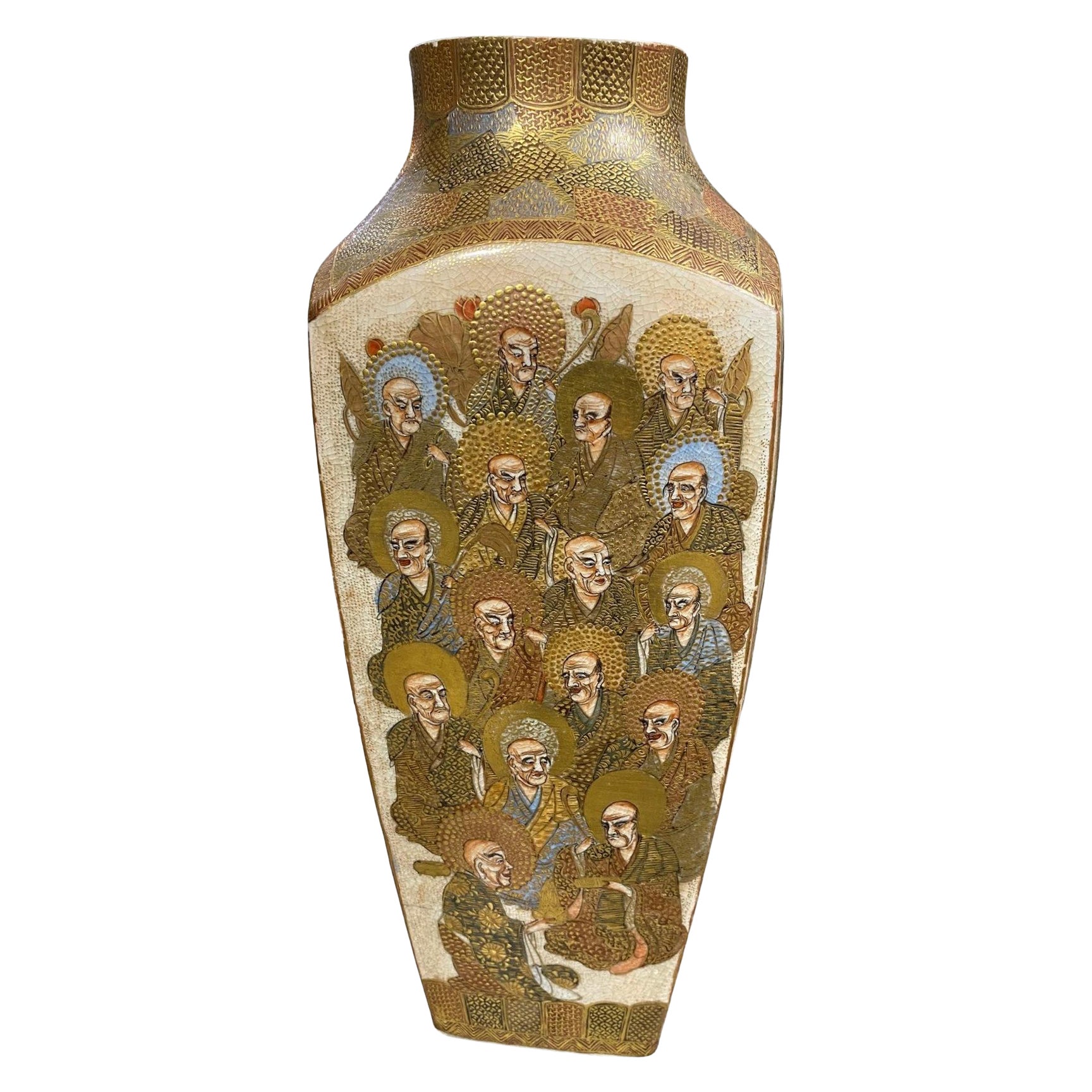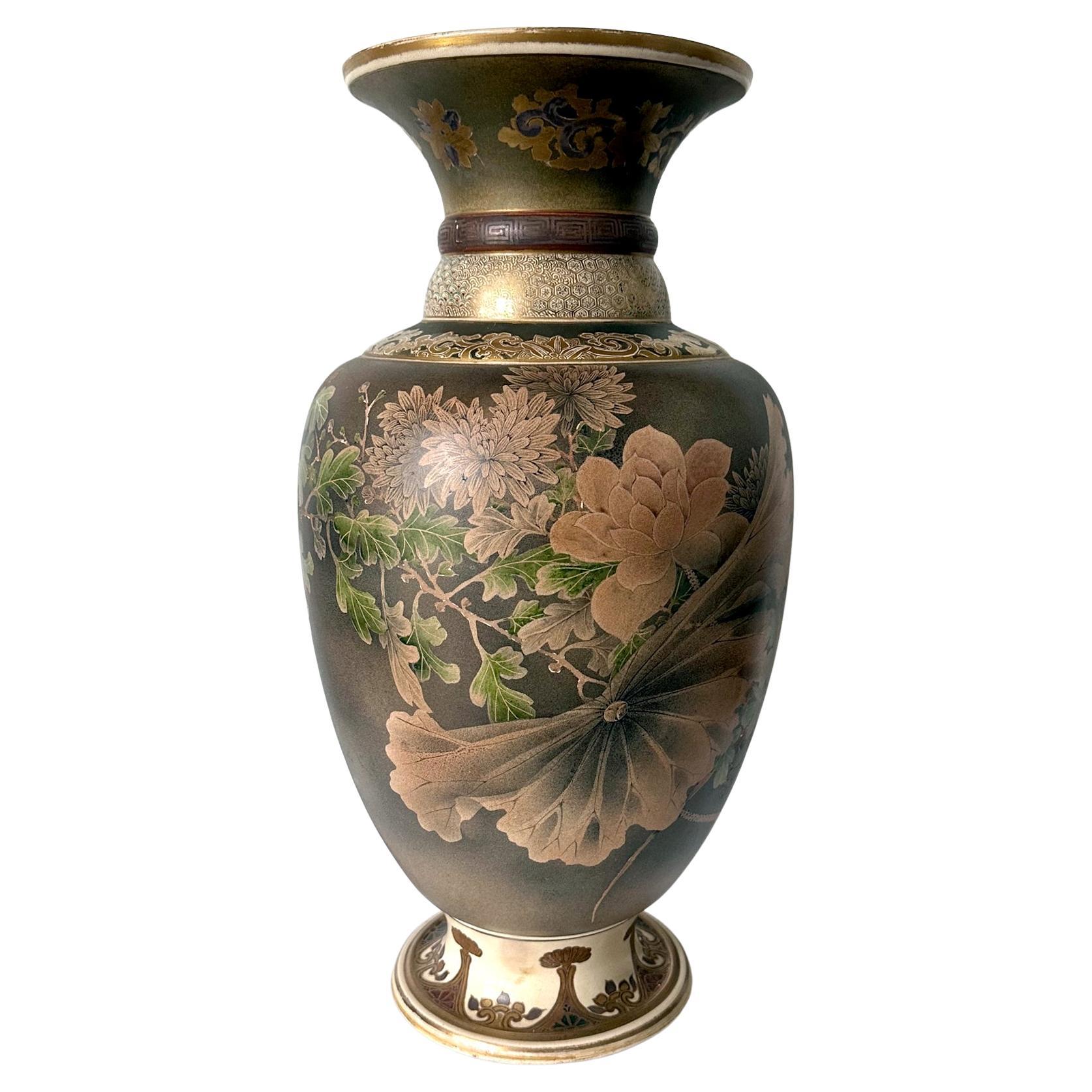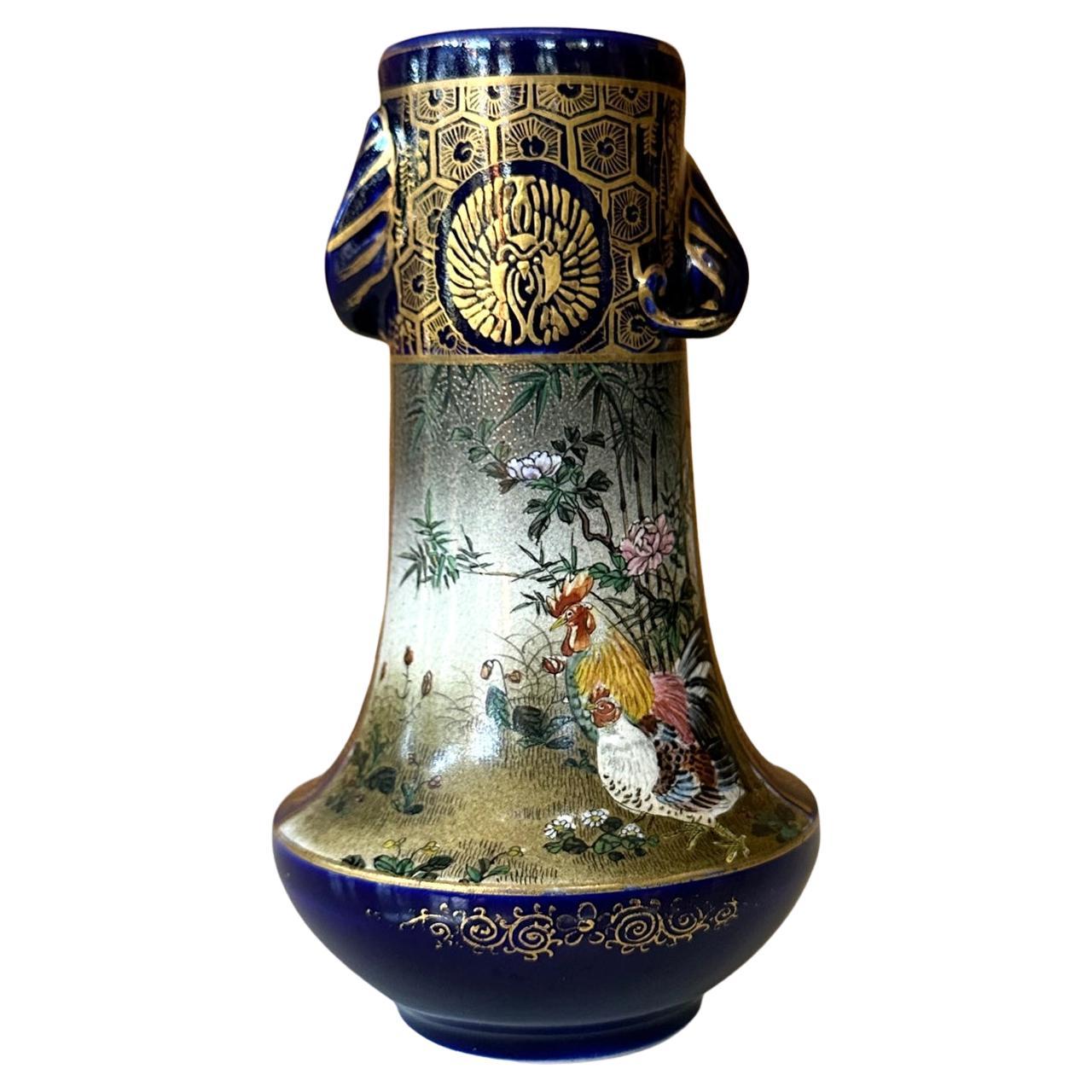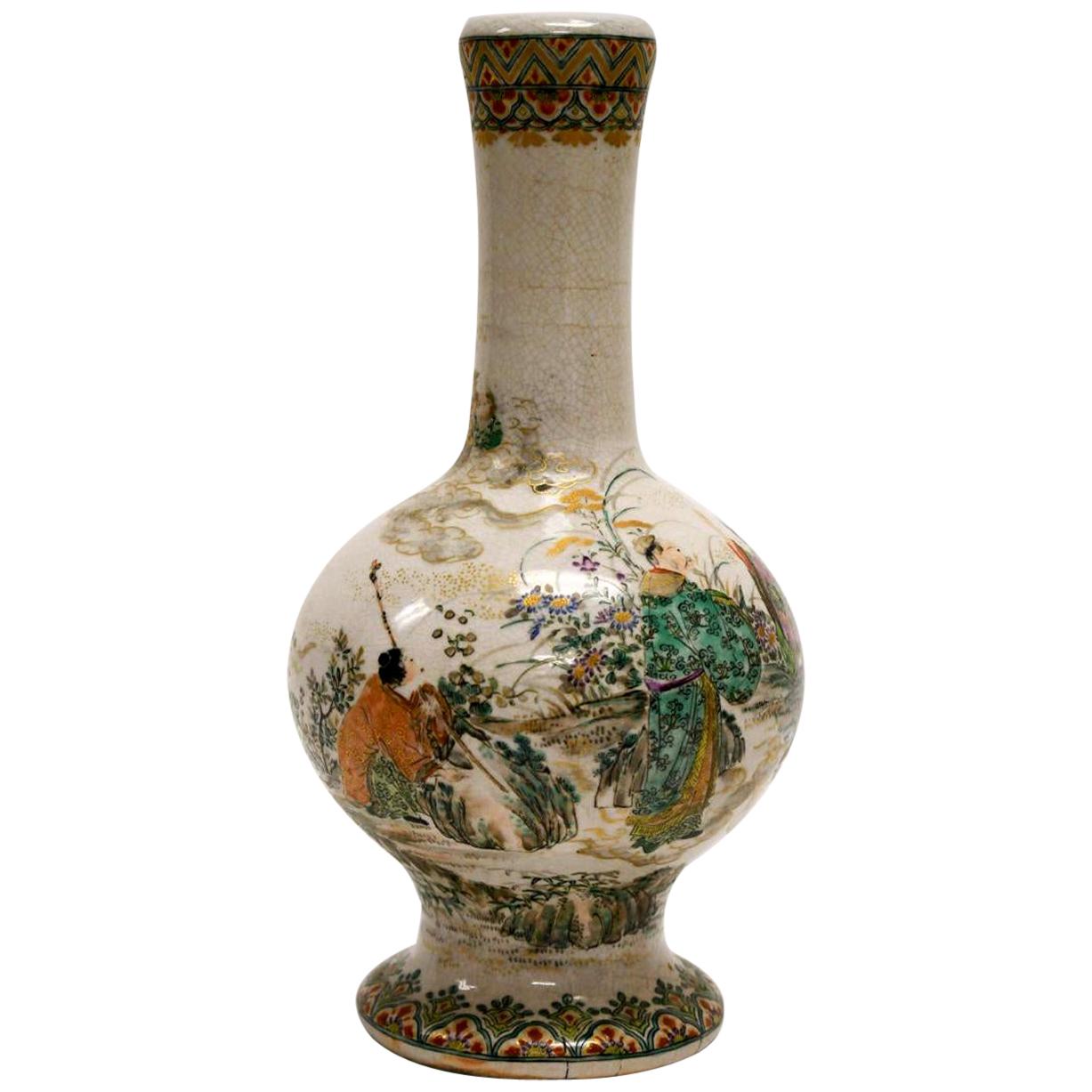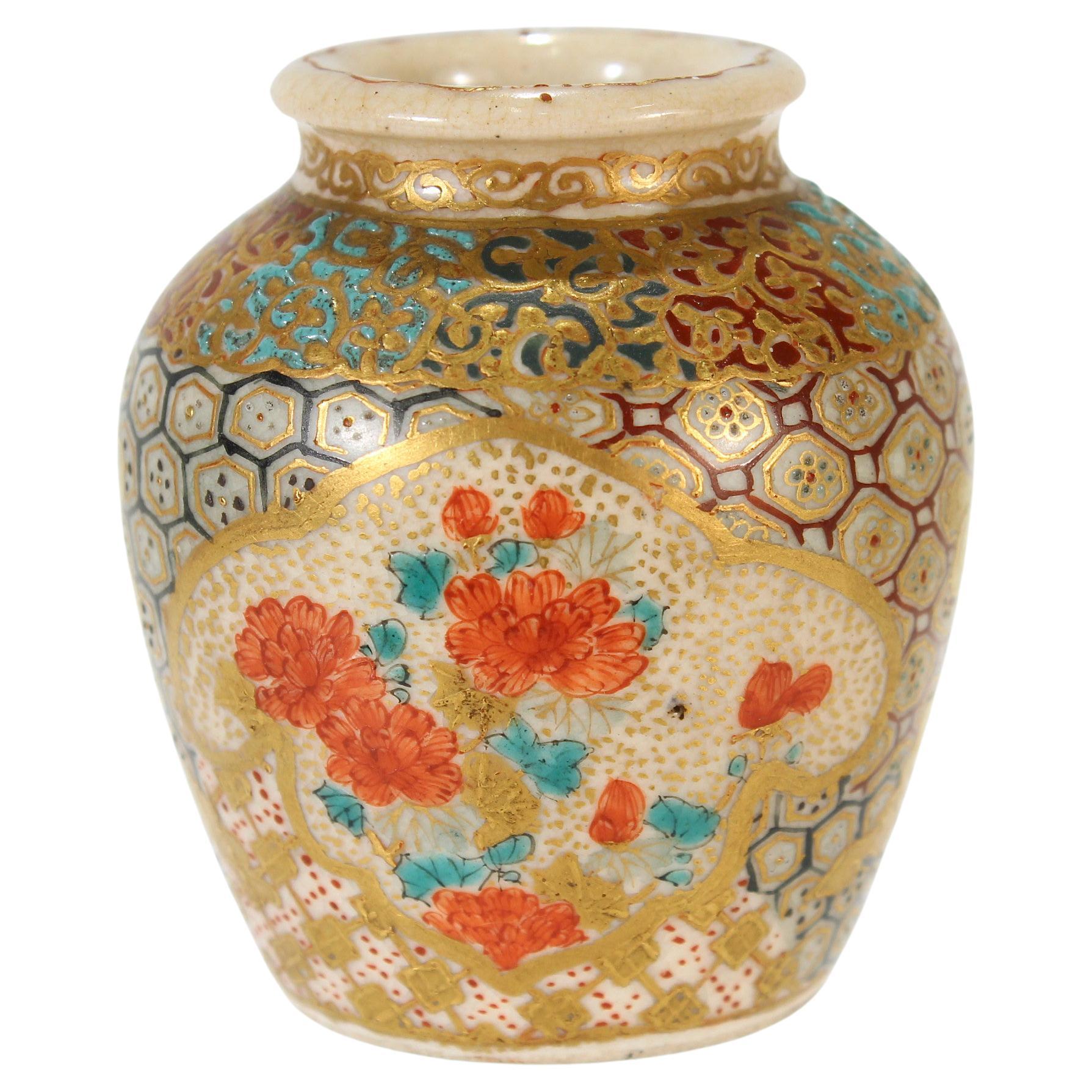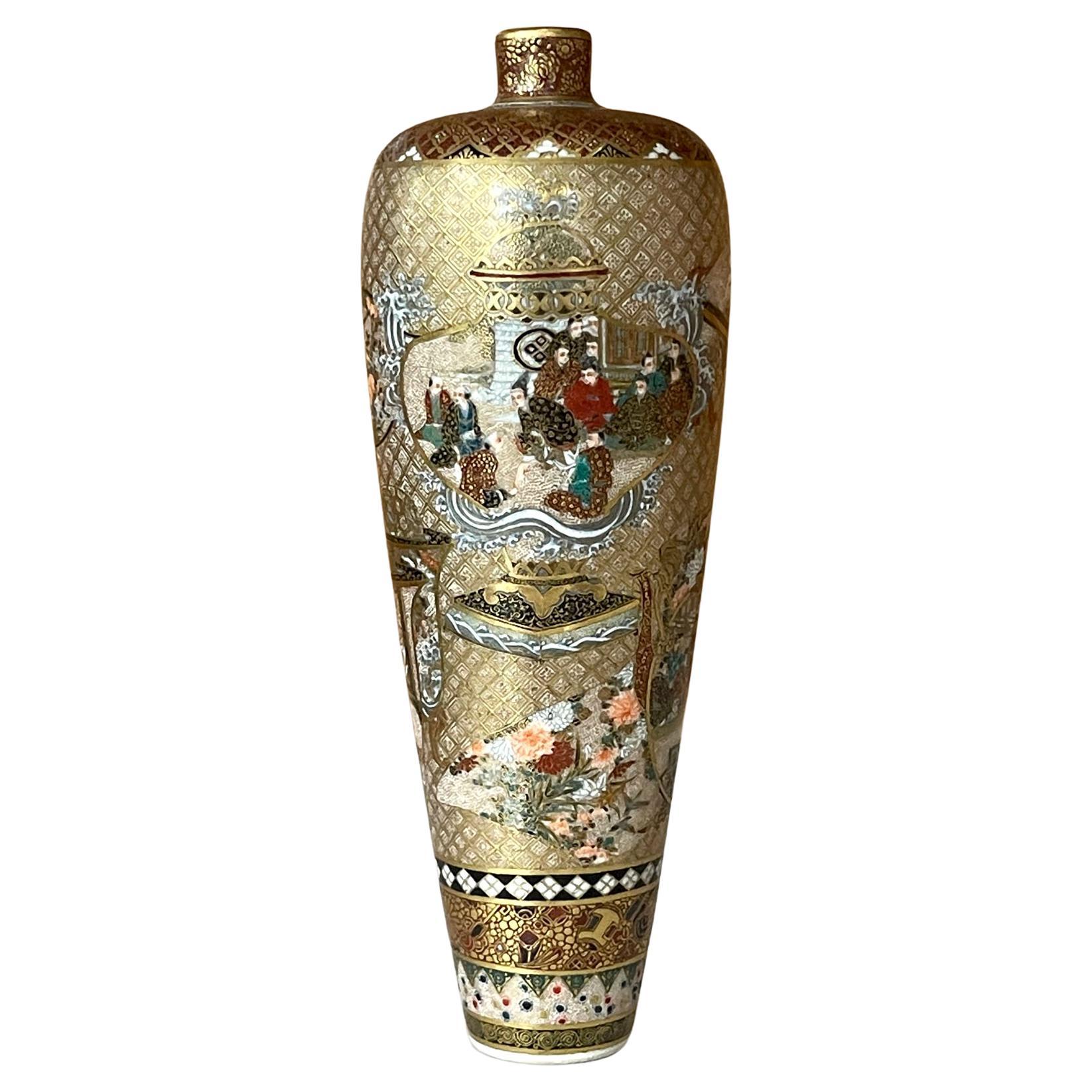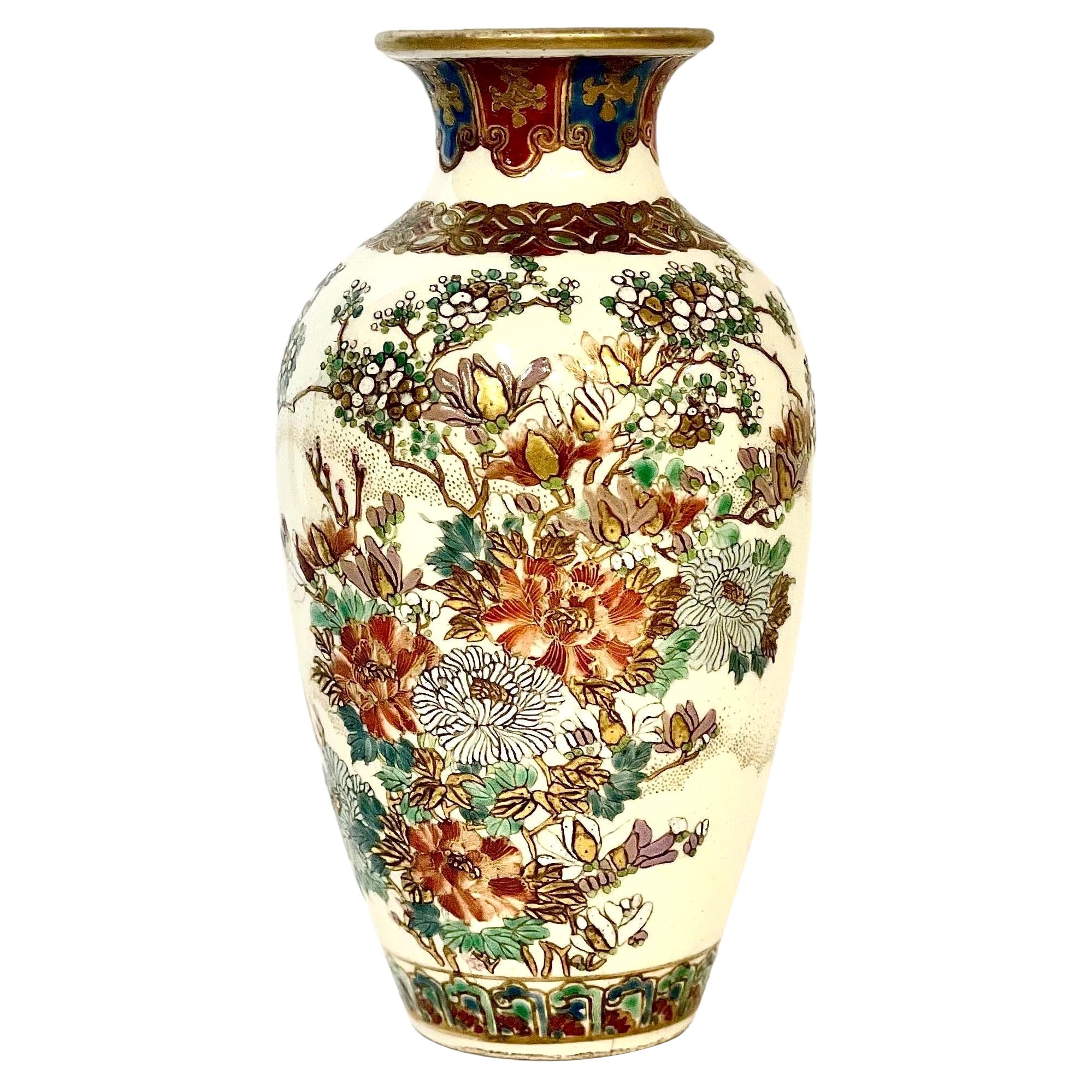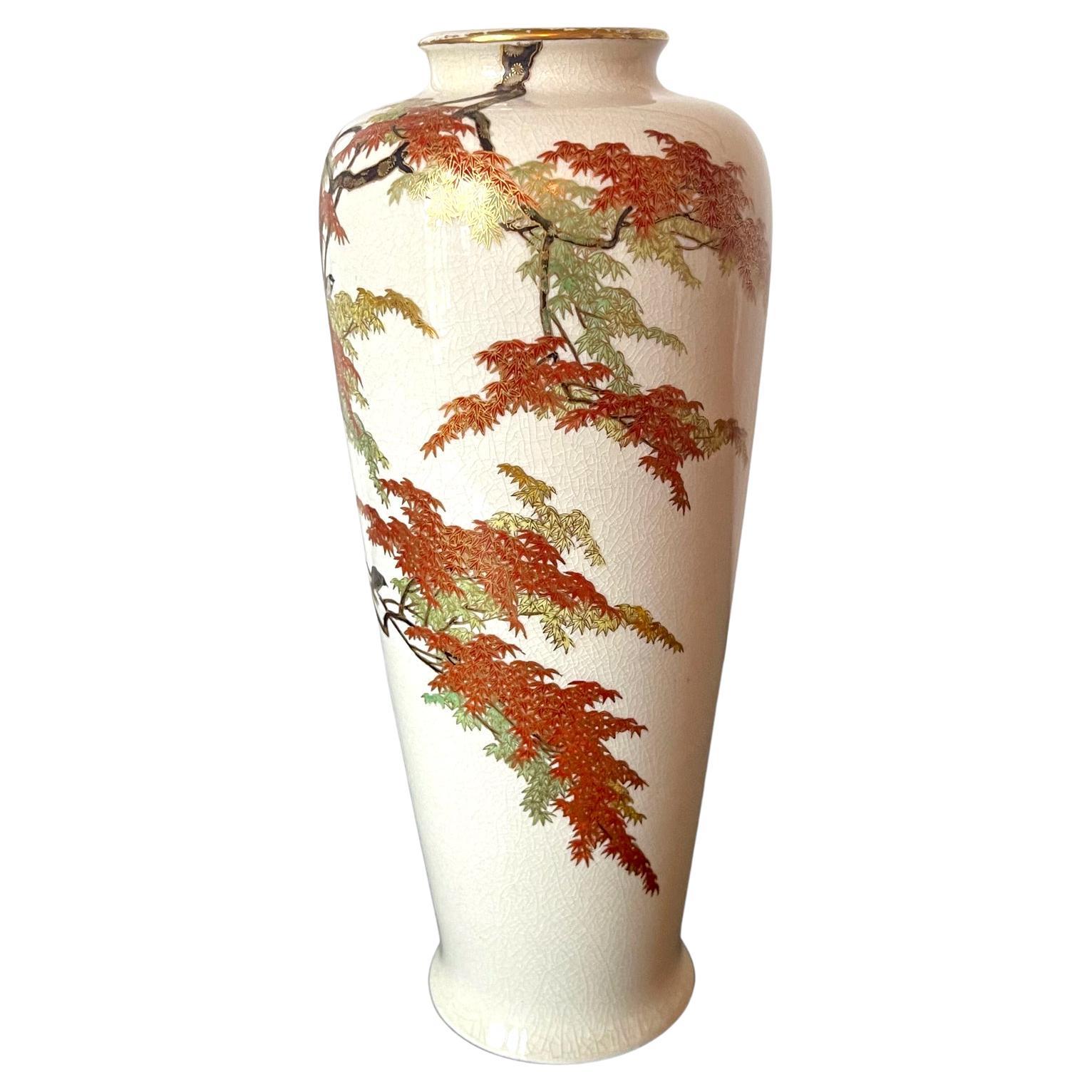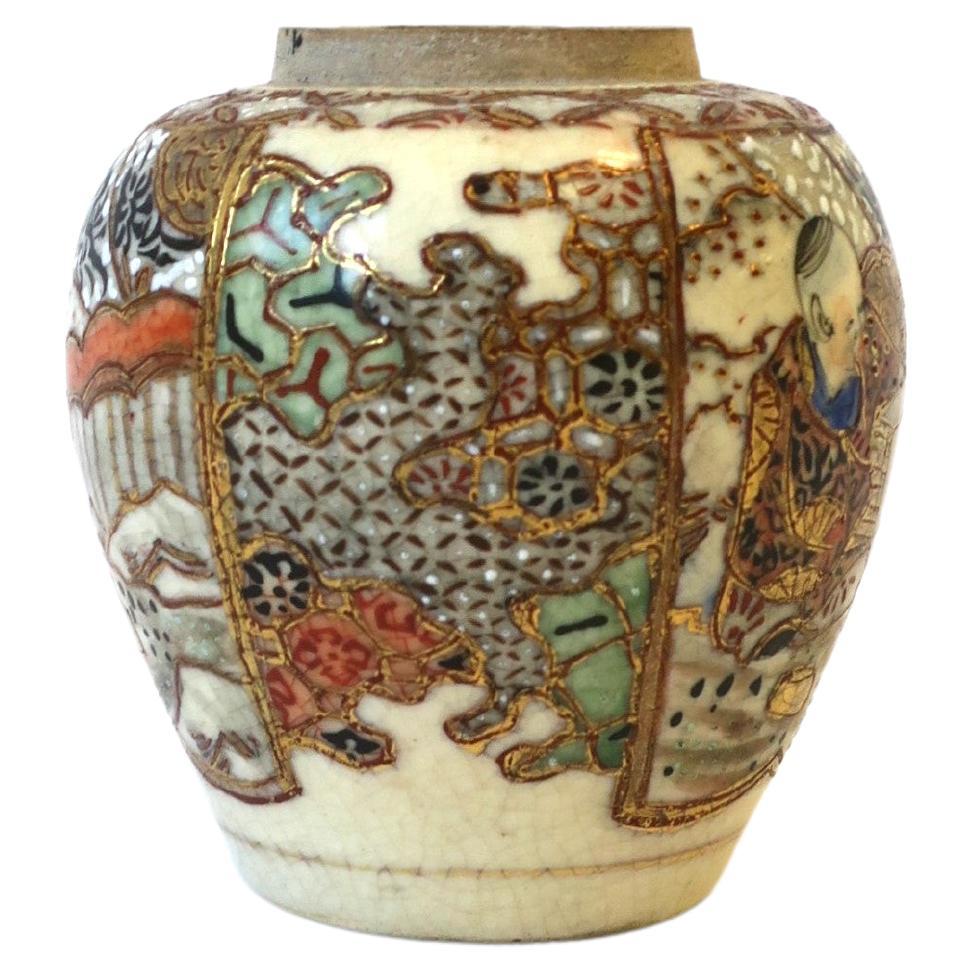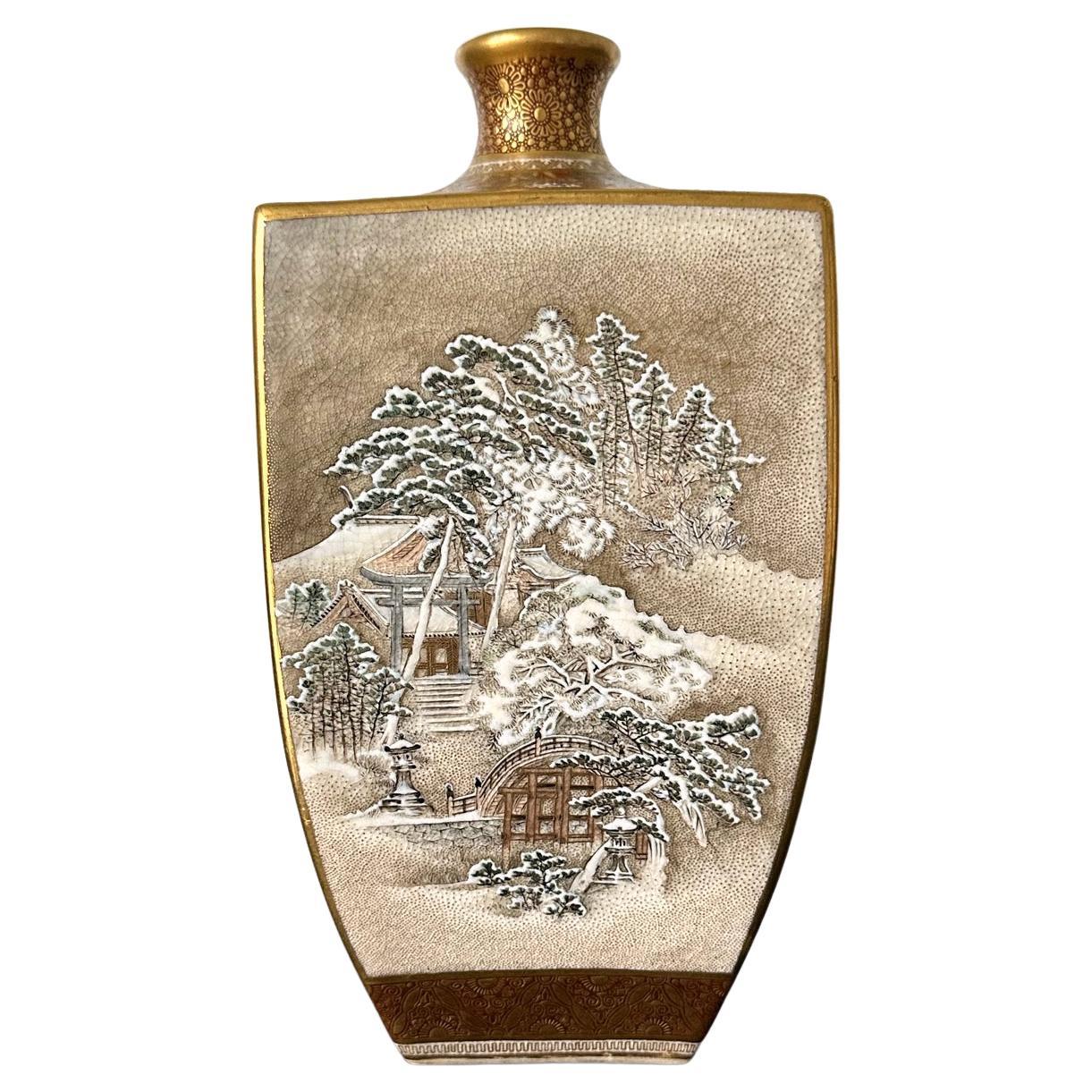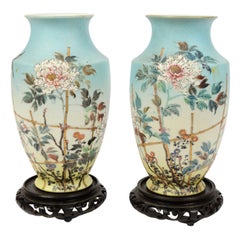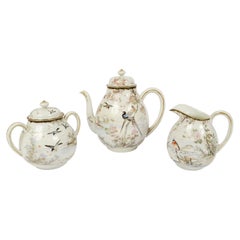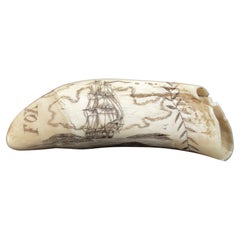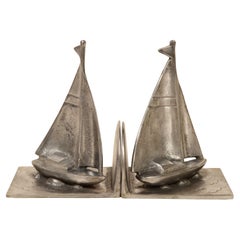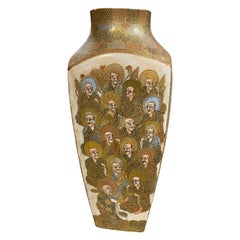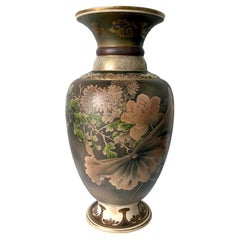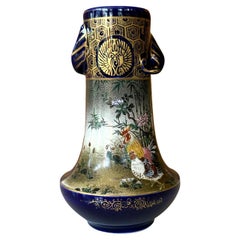
Pair of Japanese Ceramic Satsuma Vases with geishas and monks, 1875 circa
View Similar Items
Want more images or videos?
Request additional images or videos from the seller
1 of 21
Pair of Japanese Ceramic Satsuma Vases with geishas and monks, 1875 circa
About the Item
- Dimensions:Height: 12.21 in (31 cm)Diameter: 3.75 in (9.5 cm)
- Sold As:Set of 2
- Materials and Techniques:
- Place of Origin:
- Period:
- Date of Manufacture:Last Quarter of the 19th Century
- Condition:
- Seller Location:Milan, IT
- Reference Number:1stDibs: LU1020219576942
About the Seller
4.9
Platinum Seller
Premium sellers with a 4.7+ rating and 24-hour response times
Established in 1999
1stDibs seller since 2014
395 sales on 1stDibs
Typical response time: 3 hours
Authenticity Guarantee
In the unlikely event there’s an issue with an item’s authenticity, contact us within 1 year for a full refund. DetailsMoney-Back Guarantee
If your item is not as described, is damaged in transit, or does not arrive, contact us within 7 days for a full refund. Details24-Hour Cancellation
You have a 24-hour grace period in which to reconsider your purchase, with no questions asked.Vetted Professional Sellers
Our world-class sellers must adhere to strict standards for service and quality, maintaining the integrity of our listings.Price-Match Guarantee
If you find that a seller listed the same item for a lower price elsewhere, we’ll match it.Trusted Global Delivery
Our best-in-class carrier network provides specialized shipping options worldwide, including custom delivery.More From This Seller
View AllEarly 1900s Pair Antiques Japanese Porcelain Vases with Flowers and Butterflies
Located in Milan, IT
Pair of vases made of polychrome porcelain depicting hand-decorated flowers and butterflies, complete with base of carved wood. Japanese manufacture, early 1900s, signed on the base....
Category
Early 20th Century Japanese Vases
Materials
Porcelain, Wood
Porcelain Teapot, Milk Jug and Sugar Bowl, Birds and Flowers Japan Early 1900s
Located in Milan, IT
Polychrome hand-decorated porcelain teapot, milk jug and sugar bowl with refined depictions of birds, flowers, and bucolic Japanese landscapes....
Category
Early 20th Century Japanese Porcelain
Materials
Porcelain
Scrimshaw of whale tooth with whaler named Fox and engraved Greek vase 1850s
Located in Milan, IT
Scrimshaw of an engraved whale tooth, datable to around the mid-19th century, of fine workmanship length cm 12.5, depicting on one side whaling ship with islands and birds in the ba...
Category
Antique Mid-19th Century Nautical Objects
Materials
Bone
Pair of steel bookends depicting sailboat sailing circa 1930s
Located in Milan, IT
Pair of bookends made of steel and depicting a sailboat sailing upwind.
English manufacture of the 1950s.
Bon état. Measures 11.5x8x15.5 cm - inches4.5x3.2x6.2.
The last photo is the...
Category
Vintage 1930s Nautical Objects
Materials
Steel
Print depicting table 25 from Atlas F.A. Brockhaus in Leipzig 1869-1875
Located in Milan, IT
Print depicting plate No. 25 from engraving on steel plate and taken from the Illustrated Atlas published by F.A. Brockhaus, in Leipzig 1869-1875 the iconographic encyclopedia of t...
Category
Antique 19th Century Prints
Materials
Paper
Print depicting table 24 from Atlas F.A. Brockhaus in Leipzig 1869-1875
Located in Milan, IT
Print depicting plate No. 24 from engraving on steel plate and taken from the Illustrated Atlas published by F.A. Brockhaus, in Leipzig 1869-1875 the iconographic encyclopedia of t...
Category
Antique 19th Century Nautical Objects
Materials
Paper
You May Also Like
Japanese Antique Satsuma Pottery Buddhist Monks Vase with Shimazu Crest Mark
By Satsuma
Located in Studio City, CA
A beautiful Japanese Satsuma pottery studio vase featuring multiple kesa-clad enlightened Buddhist monks on each side of the vase. The piece is finely detailed with rich raised gilt highlights throughout and beautifully decorated in gold and various hand painted other colors.
From the Meiji period (1868-1912).
This piece has the all-important Shimazu Family crest mark (red circle with a cross inside) on the base authenticating the work as an old and original Satsumaware work. The mark shows the pottery was made under the rule of the Shimazu clan.
From a Los Angeles Collection...
Category
Early 20th Century Japanese Meiji Ceramics
Materials
Earthenware, Pottery
Large Japanese Satsuma Ceramic Vase Kinkozan
By Kinkozan
Located in Atlanta, GA
A large Japanese ceramic vase from the end of Meiji period circa 1890-1910s by Kinkozan (1645-1927). One of the largest studio manufacturers of the export ceramics at the time based in Kyoto. In the typical style of satsuma made at the turn of 20th century, the vase is elaborately decorated with a rather unusual kinran-de (gold paint) and green enamel highlight on a mottled brown background. The painterly decoration depicts a large seasonal floral arrangement in a circular fashion. Besides the obviously superb craftsmanship, what sets this particular vase apart from many lower quality and mass-produced pieces is its tone-on-tone color pallet that is visually somber and the small and sensitive details that heralds the change of the seasons. When the viewer goes beyond the first casual glimpse of the blossom and foliage, one would notice that on the edges of certain leaves as well as along the stalks, there accumulates a very thin layer of the white dust that represents the frost. The flower in bloom are chrysanthemums. Despite of being splendid, they are the messengers of the autumn. The large lotus leaf was subtly rendered in a bended and slightly withered manner, just past its prime. Although the lotus is still in bloom, the prominent seed pod indicates it may be the last for the season. The sentimental capture of the change of the seasons is not unusual in Japanese art. This vase poetically represents such a subtle transition from summer to fall, perhaps depicting the very first frost.
The neck of the vase is also slightly unusual with two rolled rings...
Category
Early 20th Century Japanese Meiji Ceramics
Materials
Ceramic
Japanese Satsuma Vase with Figures
Located in Antwerp, BE
A mid-20th century Japanese Satsuma vase with figures.
Satsuma ware is a style of Japanese earthenware originally from the Satsuma region of what is today southern Kyushu. There are two distinct categories of this ware: The original plain dark clay early Satsuma...
Category
Mid-20th Century Japanese Japonisme Vases
Materials
Ceramic
Fine Japanese Ceramic Satsuma Vase by Kinkozan
By Kinkozan
Located in Atlanta, GA
A miniature Japanese ceramic vase from the end of Meiji period circa 1880s- 1910s by Kinkozan (1645-1927). One of the largest studio manufacturers of the export ceramics at the time ...
Category
Early 20th Century Japanese Meiji Ceramics
Materials
Ceramic
Early Japanese Satsuma Antique Vase
By Satsuma
Located in Atlanta, GA
An Satsuma ceramic stone ware vase, circa 19th century, around the end of the Edo and the beginning of Meiji period. In the form of a Classic garlic bottle whose prototype was from China, the white bodied piece is decorated with an early form of kin nishikide, the so called golden brocade, a palette of iron-red, blue, green, yellow, purple and black with golden highlight. The over glazed enamel paint shows a group of robed figures in a garden setting with a lion and three tigers. A transparent overall glaze shows very fine crackles. The design is relatively sparse with plenty of negative space in contrast to the Satsuma production from the late 19th century, when the trend became fussy and overly glitz, due to the influence by the perceived western taste for the export market. This piece may still be made for export but its pattern was more influenced by both Kyoto Pottery and the Kano school of painting compared to the export ware by the end of the 19th century onward to the early 20th century. It was believed by many that this was a result of Satsuma potters visiting Kyoto in the late seventeenth century to learn over glaze painting techniques.
There are some age glaze crackles especially around the foot. The piece is not signed in keeping with the earlier production before Satsuma ceramics...
Category
Antique Mid-19th Century Japanese Japonisme Ceramics
Materials
Ceramic
$2,850 Sale Price
25% Off
Satsuma Japanese Meiji Pair Diamond Shaped Pottery Vases
By Satsuma
Located in Bishop's Stortford, Hertfordshire
A good and unusual pair antique Japanese Satsuma Meiji diamond shaped pottery vases decorated with monk figures with a scrolling dragon dating from the 1...
Category
Antique 19th Century Japanese Meiji Ceramics
Materials
Pottery
Recently Viewed
View AllMore Ways To Browse
Monks Vases
Geisha Vase
Satsuma Dragon
Ceramic Geisha
Japanese Satsuma Dragon Vase
Satsuma Vase Geisha
German Porcelain Vase Painted
German Red Ceramic Vases
Iittala Glass Vintage
Iittala Vintage Glass
Japanese Vase Lid
Purple Vase With Gold
4 Handle Vase
Cobalt Blue Vase Vintage
Contemporary Cylinder Vases
Rustic Clay Vases
Spheres Ceramic
Unique Pink Vase Glass
